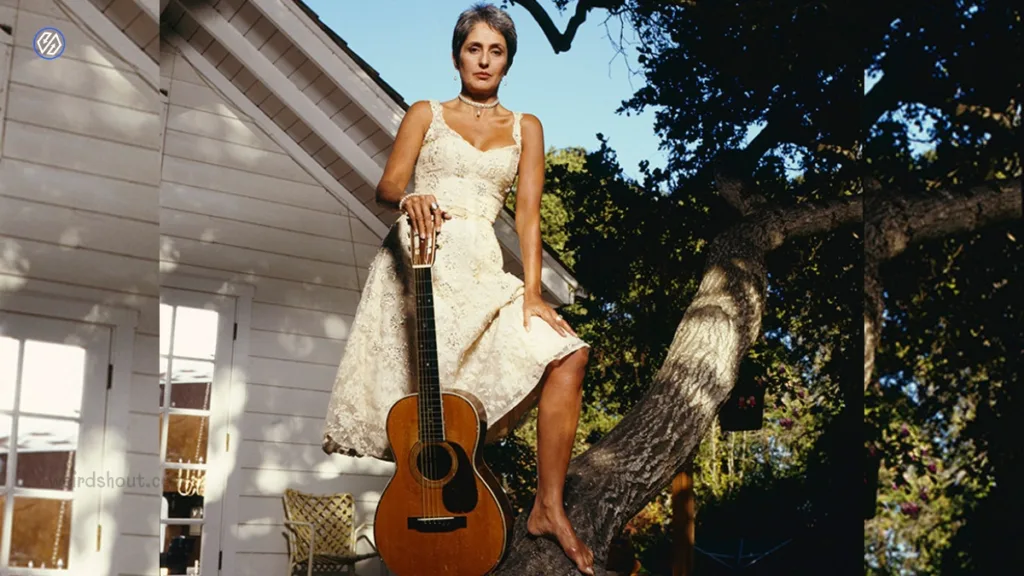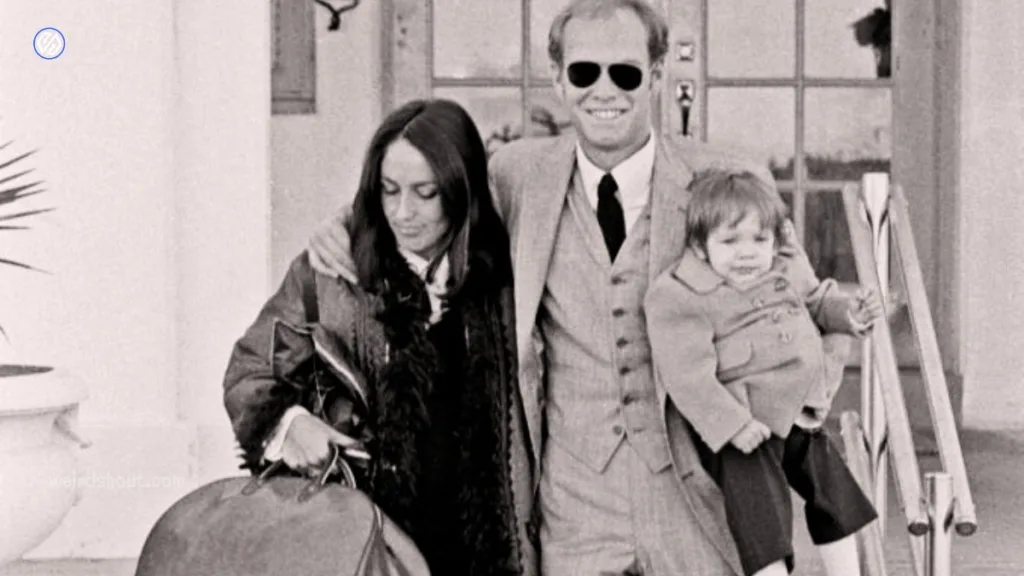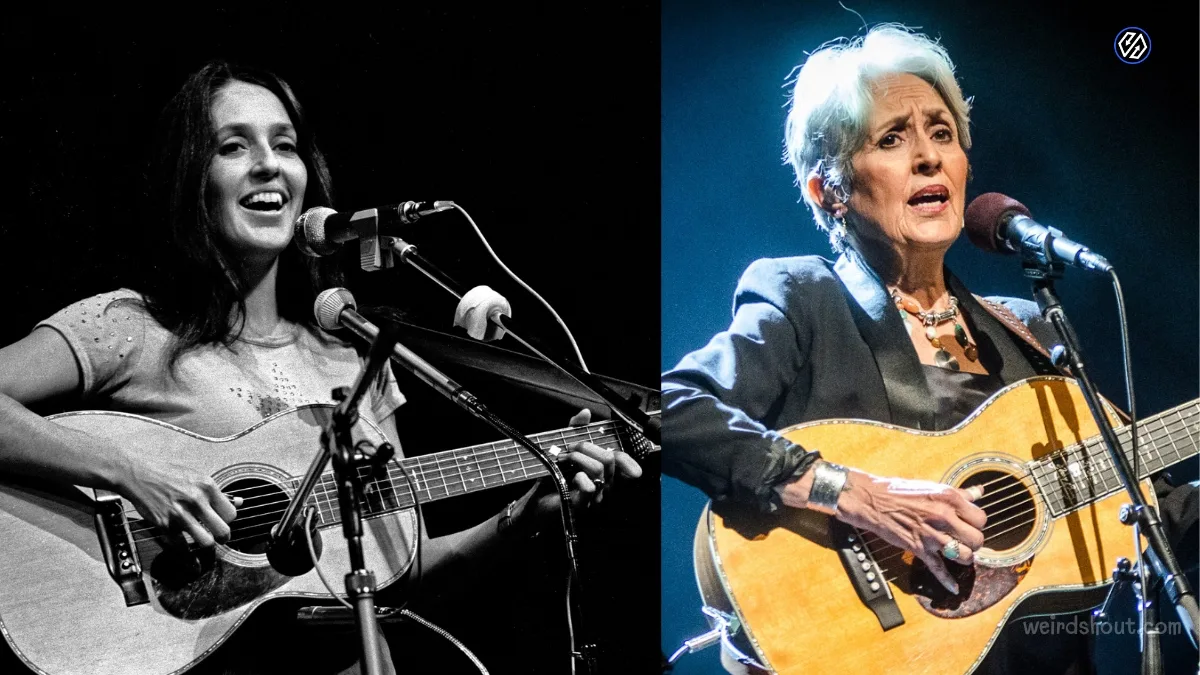Explore the remarkable journey of Joan Baez, a legendary artist and activist, with a career spanning over six decades, impacting peace activism and folk music worldwide.
Joan Baez’s Timeless Legacy
Early Life and Musical Genesis
Joan Baez, born on January 9, 1941, in Staten Island, New York, had music woven into her early life. Her father, Albert Baez, a physicist, and her mother, Joan Bridge Baez, both held a strong fondness for folk music. Joan’s love for the guitar and her captivating singing voice started to blossom from a young age.
Rising to Stardom
Folk Revival and “Joan Baez” (1960)
In 1960, Joan Baez achieved stardom with her self-titled debut album. This remarkable release, featuring traditional folk tunes, highlighted her ethereal soprano voice. Instant classics such as “Silver Dagger” and “East Virginia” captured the spirit of the folk revival movement of that time.
The Power of Activism
In addition to captivating audiences with her music, Joan Baez made significant contributions to social and political activism. Throughout the tumultuous 1960s, she utilized her platform to champion causes such as civil rights, non-violence, and peace. Her active participation in the civil rights movement, anti-Vietnam War protests, and her close connection with Dr. Martin Luther King Jr. firmly established her as an iconic figure of peace and justice.
The Artistry of Joan Baez
A Voice that Transcends Generations
Joan Baez’s voice is frequently characterized as transcendent. Her capacity to communicate unfiltered emotions through her music strikes a chord with audiences of every generation. Whether she’s performing protest anthems or tender ballads, her voice possesses the ability to stir emotions and ignite a desire for change.
Discography Highlights
Joan Baez’s discography is a treasure trove of albums, each providing a distinct and memorable musical journey. Albums like “Diamonds & Rust” (1975) and “Day After Tomorrow” (2008) serve as enduring proof of her remarkable talent. Her interpretations of Bob Dylan’s compositions, such as “With God on Our Side” and “Forever Young,” have left an indelible mark on the music world.
Joan Baez’s Enduring Legacy
Influence on Contemporary Artists
Joan Baez’s impact on modern musicians is unquestionable. Renowned artists like Tracy Chapman, Ani DiFranco, and the Indigo Girls acknowledge her as a significant source of inspiration. Her enduring legacy continues to shape the folk and protest music genres, leaving an enduring imprint on upcoming generations of musicians.

Philanthropy and Activism
Throughout her later years, Joan Baez maintained her commitment to humanitarian and environmental causes. She continued to lend her support to organizations such as Amnesty International while actively campaigning against nuclear weapons and environmental destruction.
More details on Joan Baez
In addition to her singing career, Joan Baez has nurtured artistic talents such as drawing upside-down and writing backward since childhood. Her book, “Am I Pretty When I Fly?” features her drawings, and she has also explored portrait painting.
Furthermore, she is the subject of a new documentary titled “Joan Baez I Am a Noise,” which will be screened nationwide next week. Initially, the idea was to create a film about her final tour, but she chose to provide an honest legacy encompassing her entire journey, granting the directors access to her storage unit for this purpose.
“And I decided I really wanted to leave an honest legacy, you know, about everything,” Baez said. “And so, that’s when I gave the directors a key to my storage unit.”
Joan Baez’s mother had preserved a treasure trove of memorabilia, including home movies, letters, and drawings, which Baez had never explored. In the documentary film “Joan Baez I Am a Noise,” there’s a poignant moment when she enters the storage unit, marking her first-ever visit to it. You can view the trailer for the documentary by clicking on the video below:
Joan Baez played a significant role in the 1963 March on Washington, but when asked if she was hopeful at the time, she responded that she was more “smart” than hopeful. She understood that the struggle for civil rights would be a long battle.
In the 1960s, Baez embarked on a tour with Bob Dylan, and they fell in love. However, their relationship didn’t endure, and Baez expressed that Dylan broke her heart. She described it as one of the deepest emotional connections she had ever experienced, highlighting that being walked away from is often more challenging than walking away from someone. It was a profound and difficult experience for her to overcome.

In 1967, Joan Baez was arrested for obstructing entrances to military induction centers in Oakland, California, as an act of protest against the Vietnam War. During her time in jail, she was visited by David Harris, a journalist and anti-Vietnam War activist. They eventually got married, but their marriage faced early challenges when Harris was imprisoned after their marriage, and Baez became pregnant.
Reflecting on this period, Baez described it as a challenging way to start a marriage, particularly for someone who aspired to be a perfect wife and mother. It was a situation that made achieving those ideals nearly impossible.

In the documentary, Baez also shares a deeply personal revelation. She and her sister Mimi came to believe, as adults, that their father had been sexually inappropriate with them when they were children. While she couldn’t recall all the details, both of her parents denied that such events had occurred.
Joan Baez acknowledged that many parents and their children who have been part of such cycles may not remember or choose to block out difficult memories. She personally struggled to remember her own experiences until she was 50 years old. However, with her parents and sister no longer alive, Baez felt it was essential to share this long-held secret.
She recognized that most people with similar experiences might not talk about them openly, but she believed that expressing these secrets was crucial for healing. By sharing her story and her family’s experience, she hoped to open doors for others and provide them with a sense of relief.
In addition to these revelations, Baez shared another, less painful secret – at 82 years old, she has discovered a new voice. She expressed happiness with her newfound vocal range, describing it as a blessing and something she has been enjoying.
Joan Baez continues to use her voice in various ways, including her involvement with a children’s non-profit in Ukraine. However, after a life spent on the road and deeply engaged in various causes, she has discovered a newfound sense of quiet and peace. When asked if she is at peace, Baez responded affirmatively. She explained that she has learned to conduct herself in a way that brings her peace, realizing that she doesn’t have to single-handedly solve all the world’s problems or constantly be in concert mode. This newfound perspective has allowed her to breathe more freely and find relief from the pressure she once placed on herself.

